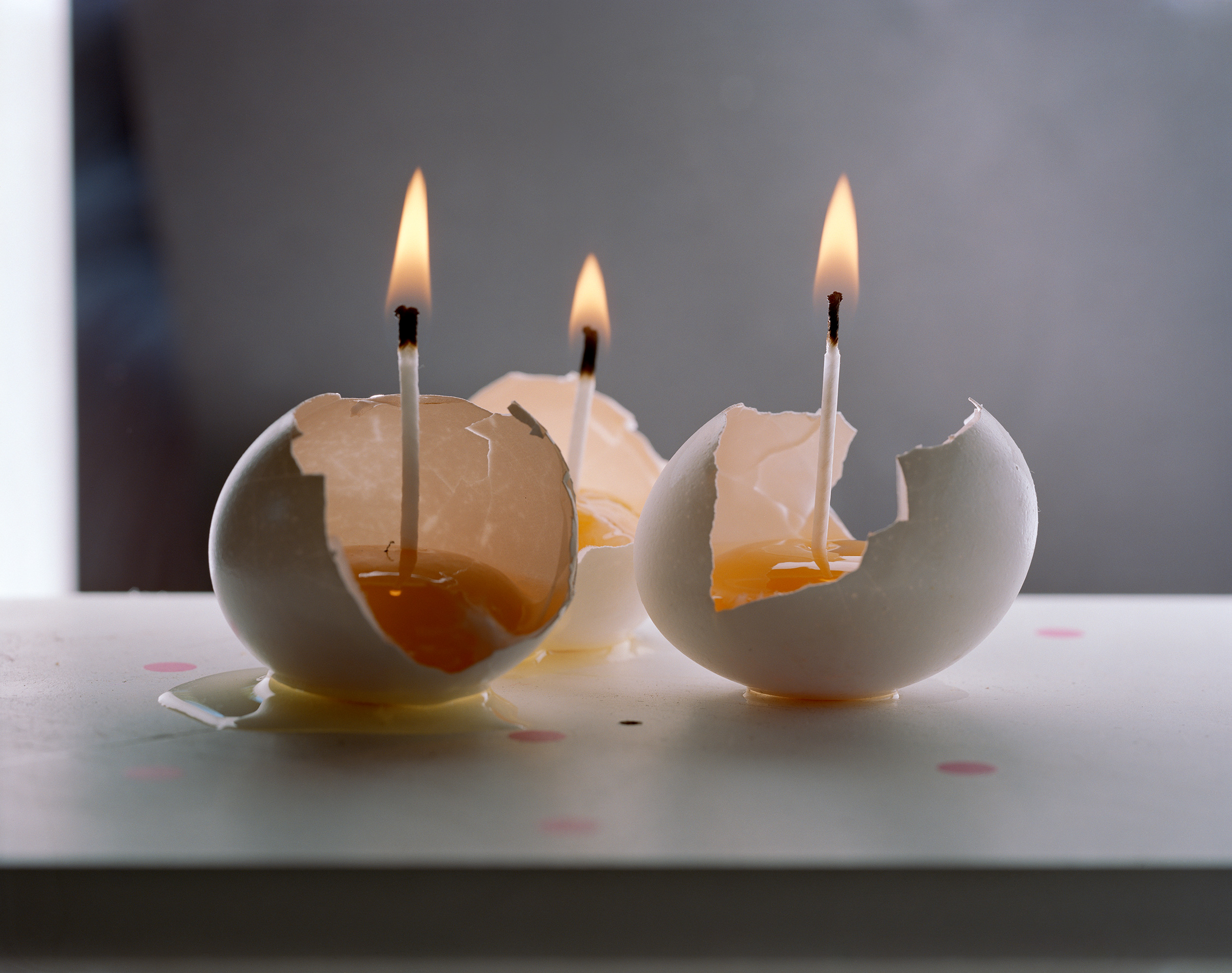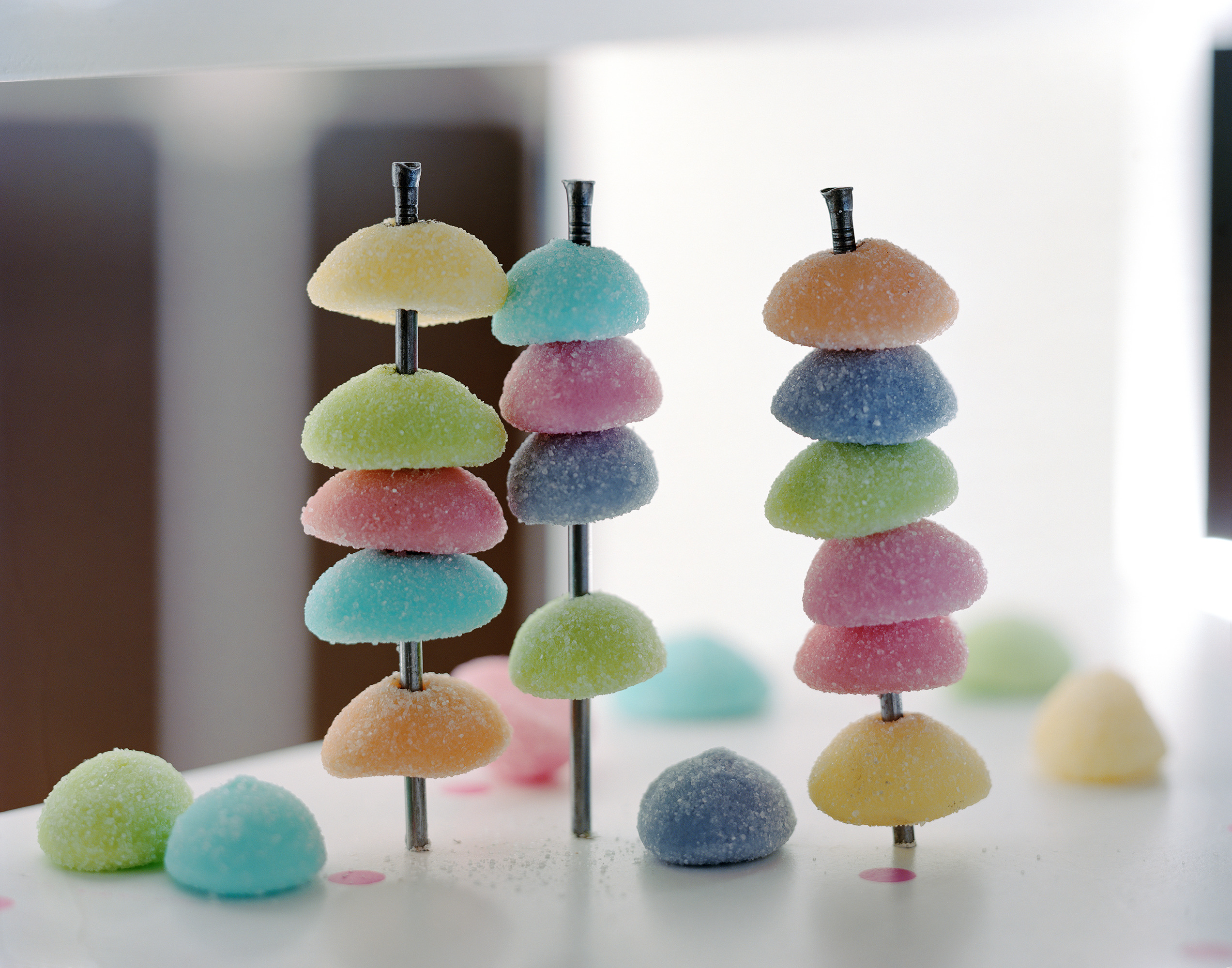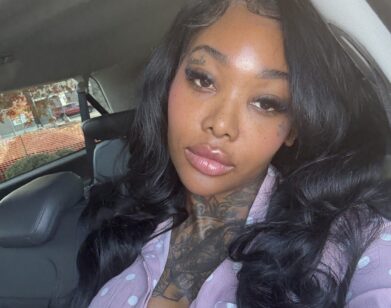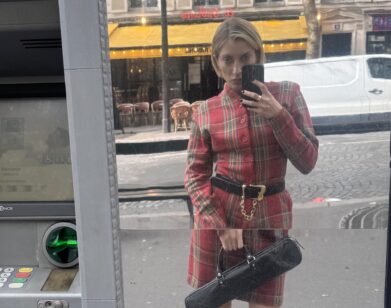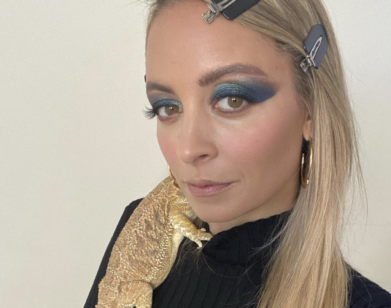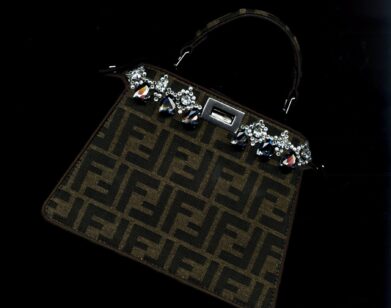Q&A
Photographer Torbjørn Rødland Wants to Keep Austin Weird
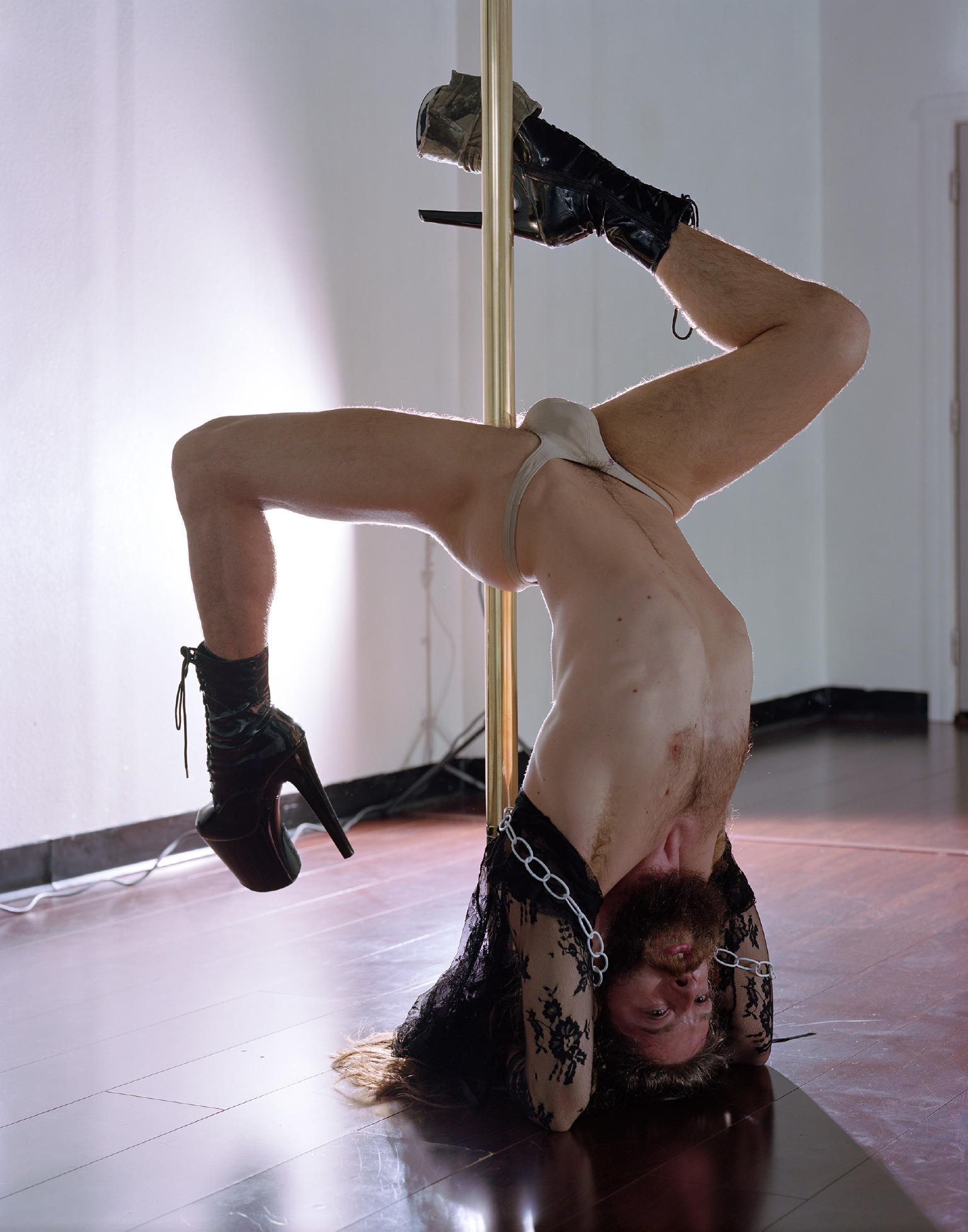
Torbjørn Rødland, “Brass Pole, Black Boots,” 2020. Courtesy the artist and David Kordansky Gallery.
Torbjørn Rødland is cheating on Los Angeles—with Austin. The Norwegian artist and photographer is known for his subversively glamorous photographs that have emerged from a long-term affair with the City of Angels. Lately, however, his eyes are set on another sun-washed, excess-loving land of Americana. Rødland is in Austin for a new solo exhibition at The Contemporary Austin, titled Bible Eye, featuring works made between 2005 and the present.
Since moving to California over a decade ago, Rødland’s photographs of eerie sterility and lush disgust have been synonymous with the type of vanity and power-play native to Hollywood allure. In them, people and objects coalesce, with limbs resembling furniture and foods oozing like bodily fluids, all while sun pierces through large windows and thin air reveals a spotless hygiene. Bodies and things are equally desired; the mystery becomes tangible. Last February, the artist turned his lens to Austin to photograph dancers from the body positive aerial arts studio Brass Ovaries, as well as subjects from an online casting agency and an open call for couples. Hardly another city could promise the traits Rødland captures in his photographs of L.A. than the one that bills itself as “weird.” However, don’t look for the clichés of a hippie land, music-banging booze-ville, or young tech professionals in his Austin. “I avoid palm trees in California and cowboy boots in Texas. Mine is not a ‘playful,’ campy project,” the artist says over the phone. Rather than geographical, the images revel in their psychological textures, independent from their locales. “They could be from anywhere, really.”
One of the anchors in the show is “Brass Pole, Black Boots” (2020), a crisply-lit image of a male dancer standing upside down over his elbows against the pole. Photographs may be silent, but, here, the metallic click of his high boot’s heel against the brass is nearly audible. A typically nocturnal affair, the photo is washed in the type of light Rødland dresses his most iconic images with, whether it’s a young hunky boy demandingly grabbing an older man’s collar (“Midlife Dilemma,” 2015) or a trio of cracked eggs each holding a slowly burning candle inside their oozing yolks (“Eggs,” 2019). A few days before opening his show, Interview called Rødland, a couple months after he photographed Nicolas Cage for this magazine’s fall 2020 cover story. It was an early morning, with the Texan sun promising a brightly-lit day.
———
OSMAN CAN YEREBAKAN: How’s Austin in January?
TORBJØRN RØDLAND: It’s beautiful, the weather is perfect. I visited Austin twice before, including last February when I produced a few photographs for my Bible Eye-show at The Austin Contemporary. Some of them, such as “Brass Pole, Black Boots” and “Candlestick Pattern no. 1,” are now in the exhibition, while two others made it into my gallery show, More Than Tongue Can Tell, at Eva Presenhuber gallery in Zurich.
YEREBAKAN: How does it feel to revisit your repertoire with the Austin show?
RØDLAND: The oldest work in the show is from 2005, titled “Intruders,” which I made in New York. It shows a collection of eyewitness depictions of grey aliens spread on a floor. There is nothing in the show that I wouldn’t have done today. I don’t really see it as a true retrospective because the checklist doesn’t go far back. My first work is from 1993. The ‘90s was a different phase.
YEREBAKAN: In “Brass Pole, Black Boots,” there is an extreme bodily gesture which requires discipline and stillness for the dancer. This must feel different than photographing a relaxed moment. Do you find a subject like a dancer to be more rebellious against your directions?
RØDLAND: For these images I used my biggest camera, a 4×5” view camera, which is slower to work with. Once the film cassette is put in, I cannot reframe or change the focus. The dancer understood that he had to hold each pose. Being still and upside down is an extra challenge —all the blood goes to your head! To me, that’s a striking aesthetic, but I knew we couldn’t continue too long. I like to vary a subject’s angles and positions to change the energy—for example I put heads on tables, or in this case turn the whole body around. This feels like or indicates less control, less rationality.
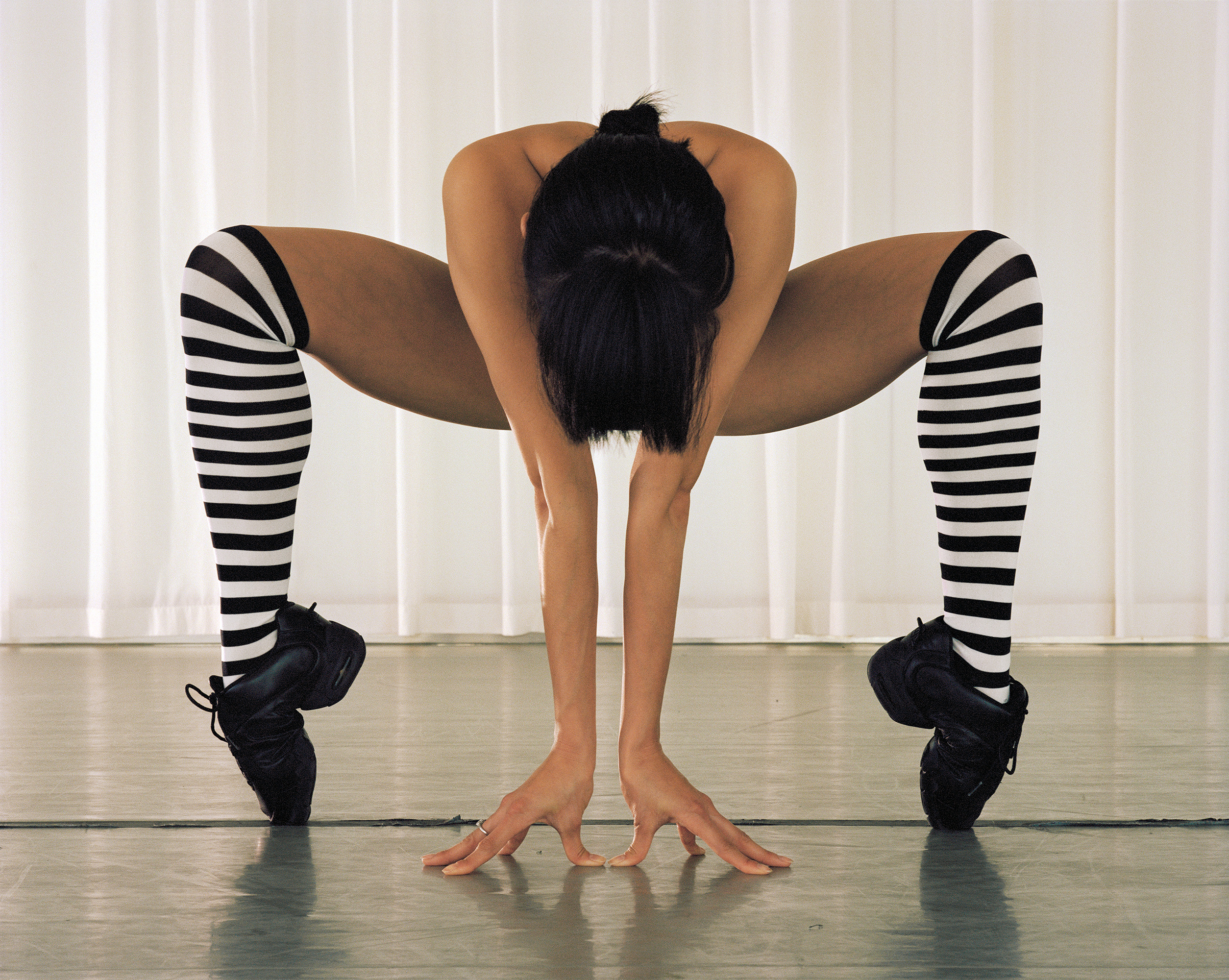
“Dancer,” 2009-2012. Collection of Martin and Rebecca Eisenberg. Image courtesy the artist.
YEREBAKAN: In “Candlestick pattern no. 1,” we see another tension between the vertical and the horizontal. The subject is lying flat as you said and the glass candlesticks have candles romantically melting down with a view of daytime Austin through the window in the back. Both the candlestick and the pole are cutting through the images.
RØDLAND: I do gravitate towards a central axis when I compose a picture, and sometimes more than one vertical axes—they both cut through and open up the image. In the beginning, I used my own body as the picture’s central axis. I photographed myself as an upright wanderer in Norwegian landscapes. I quickly realized that I should vary the figure’s positioning.
A central axis—an axis mundi—still has a simplicity and stillness that I keep returning to. It is peaceful. It places you in your world. I also prefer to include and work with background details like plants, window frames, power sockets and cables. They typically make the images more relatable and grounded in the everyday. A window can suggest a landscape outside. I choose to avoid classical photography studios with their neutral, seamless backgrounds.
YEREBAKAN: How did you find the body positive pole dancing studio in Austin? How was your scouting process here?
RØDLAND: Last February, I visited an artist’s solo show in L.A. right before coming to Austin to start photographing. It turned out this artist was connected in Austin and she sent me links and Instagram profiles of interesting locals.
YEREBAKAN: Is there any difference between photographing for editorial and your art practice?
RØDLAND: I don’t necessarily see those projects as editorials, but more as images I otherwise wouldn’t get to realize. Nicolas Cage, for example, wouldn’t have had his limo driver take him from Las Vegas to Burbank to work with me on an art project. It just wouldn’t have happened.
YEREBAKAN: Los Angeles means sun coming through large windows, bright blue pools, and a particular kind of excess; here, we have Texan glamour as well. Besides their similar climates, the two places have not-so-dissimilar expressions of vanity. I am curious about your interpretation of Texan glamour.
RØDLAND: Today is a great day here in Austin, but the sun is not as reliable as it is in L.A. In terms of visual tropes, I find it more productive to transfer them from one place to another. When in Texas or Los Angeles, I find it more natural and productive to work with Nordic melancholia or influences from Japanese pop culture.
YEREBAKAN: Speaking of Nordic melancholia, do you pay attention to avoiding this stereotype associated with art and literature from Scandinavia?
RØDLAND: Not really. I embrace it. I put to work. It’s a part of who I am.
YEREBAKAN: As an artist who makes work about isolation, how do you handle the pandemic?
RØDLAND: I spent a good portion of it in lockdown in London. I’ve always handled self isolation really well—the challenge has been to reach out to people. When isolation is a shared project like now, I find it quite easy but worry about its effects on others who are not good at it. Imagine being 17 and not having a summer to lose.
YEREBAKAN: What do you think about normalcy? When I look at your photo shoot with Paris Hilton, I see the normalcy as eerie because I know who took those pictures. Otherwise, they’re incredibly “normal” photos of Paris Hilton, but knowing you created them, their normalcy is off.
RØDLAND: There is always a balance point between a picture seeming too normal, or unremarkable, on one hand and too far removed from normalcy on the other. A snapshot reflecting day-to-day life often doesn’t push the material to a very interesting place, beyond confirming what you see around you. It can seem “too easy.” There is another photographic approach which is overproduced and pushed way into the fantastical. I think there’s always a negotiation between the two, which I balance to a point that I’m comfortable with. For a subject like Paris Hilton, who has cultivated an image of a camp queen, it was interesting to bring her back to a type of beauty that is more relaxed and supposedly normal. This is probably more successful in some of the images than in others, partly because she was uncomfortable when she realized I wasn’t going for her preferred aesthetic. I work on film and so there was nothing to show, nothing to see. Therefore she had less control over the situation.
YEREBAKAN: Is that the difference between working with celebrities whose are inseparable from the viewers’ preliminary assumptions as opposed to models?
RØDLAND: On the celebrity’s end, the photograph is associated with their public image and they’ll be subject to reaction or criticism rather than me. For me, a familiar face offers another type of entry, it’s a way for the image to open up for the viewer. You relate differently to a photographed figure that you can name. Collaborating with a celebrity, however, isn’t necessarily more difficult than working with a model. If I asked Robert Pattinson to just stand straight up and look handsome in the suit, he would get completely bored—he was disinterested in what you called “normalcy.” He wanted to push himself as far away from what he had done before as possible.
YEREBAKAN: I know from our previous conversations that you avoid talking about your photographs’ narratives. Do you build your juxtapositions specifically for celebrity subjects, or do they become part of what you already have in mind?
RØDLAND: I have a folder with sketches and ideas and when I’m planning to collaborate with someone I look through these images for productive combinations of scene and character. I reject singular readings of my work because I’m drawn to something that I feel is hard to pin down and larger than my own understanding.
YEREBAKAN: What about memes? They fascinate me because they prove the infiniteness of reading an image. The interpretation is endless as long as we have something to attach to the picture. What the Pictures Generation artists did in the ‘80s somewhat align with today’s memes.
RØDLAND: Those artists had a critical eye on culture at large, with critical questions about cultural forms, power, and politics. Without losing this perspective, I am interested in a return to the personal. A viewer’s background, traumas and relationship to photographic images all affect how they see my work. The best memes function similarly. They’re about finding your own references and share an experience that haven’t yet found an expression. That’s what interests me in memes: post-poetic poetry.
- “Eggs,” 2019. Courtesy the artist and Nils Stærk, Copenhagen.
- “Candy Skewers,” 2017. The Mohn Family Trust. Courtesy the artist.
YEREBAKAN: You’ve been meme-ified before. “Midlife Dilemma” (2015) has been passed around Instagram. My own reading aligns with the young beautiful man being threatened by his sugar daddy who wants to cut him off, but the same picture was used as a meme about the art market and one about baby boomers.
RØDLAND: I like that there are different versions, different takes. In the most productive memes people see themselves or someone they know, or a narrative that fascinates them. The sugar daddy reading seemed to be the most widespread. This language- and image-conscious mentality has been driving our culture for years. I’m trying to ground it in identifiable qualities, something tactile and psychological.
YEREBAKAN: The images in this show include drippings of egg yolk or other unknown gooey substances. What do you think about disgust in this COVID-era obsession with hygiene?
RØDLAND: The effect of my images may have increased a little bit over the last year—we are more concerned with and conscious of touching surfaces with exposed liquids. It’s true that I’ve in part been encouraging bodily paranoia.

